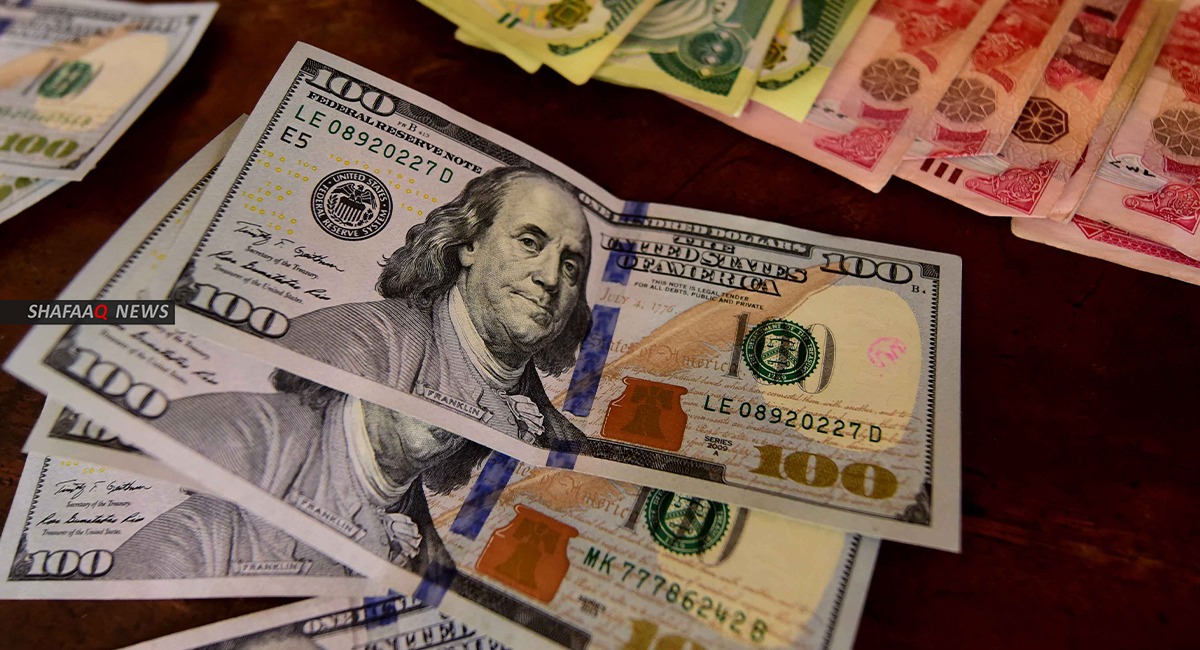Dollar eyes quarterly drop as rate rise bets recede

Shafaq News/ The dollar tracked toward a second consecutive quarterly loss on Friday, as investors see U.S. interest rates close to peaking and expect the dollar's yield advantage is in decline.
A modest boost from a rush to safety around mid-March as banking jitters hit global markets seems to be fading, and the dollar index is down 1.2% for the quarter, to extend a 7.7% fall in the fourth quarter of 2022.
Moves in the Asia session on Friday were modest, as a tense calm has settled over traders, who still have an eye on the prospect of further deposit flight at U.S. regional banks.
The euro rose 0.5% on Thursday after stronger-than-expected German inflation figures reinforced expectations that there are a few more rate increases left in the Euro zone.
It was steady at $1.0898 in Asia, while investors wait for Europe-wide inflation data due later in the day. Core personal consumption expenditures (PCE) price index, the Federal Reserve's preferred inflation measure, is also due.
The dollar drifted 0.2% higher on the yen to 133.07 yen.
Through March, U.S. interest rate markets dramatically repriced the outlook and now see a roughly 40% chance that the Federal Reserve is finished with rate increases. Fed funds futures have priced rate cuts by year's end.
"The dollar is likely to be range-bound until the impact is a little clearer but if the re-pricing of the outlook for U.S. rates sticks, it’s got a fair bit further to fall," Societe Generale analysts said in a note.
"The saga must have an impact on both credit demand and supply and unless economic data recover very quickly, the end of the Fed rate-hiking cycle is surely much closer now, and the dollar remains way above long-term average levels in real terms," they said, in reference to recent banking turmoil.
The collapse of Silicon Valley Bank three weeks ago unleashed broader worries about banking confidence around the world - forcing Credit Suisse into the arms of rival UBS and sending bank shares sliding from London to Tokyo.
Currency markets were in general steadier than stocks and did not reflect the wild volatility seen in bond trade, though the yen - seen as a safe haven thanks to Japan's status as the world's biggest creditor - is up 2.5% for the month.
This week, the yen is down about 1.7% on the dollar.
"This week we have a recovery in risk sentiment because we haven't had any major bad news about Europe or U.S. financial institutions," said Yujiro Goto, chief FX strategist at Nomura Securities in Tokyo.
"How risk sentiment is traded in the next week will be key for dollar/yen.
Another so-called safe-haven, the Swiss franc , has had a wild month as it rose in the wake of Silicon Valley Bank's collapse, then dived as bank jitters hit Switzerland.
It looks set to end the month up 3% on the dollar.
Next week, central bank meetings loom in Australia and New Zealand, and markets have priced a pause for Australia and step-down in pace to a 25 basis point increase for New Zealand.
On Friday, the New Zealand dollar broke above its 50-day moving average and stood at a nearly two-week high of $0.6296. It is about 1% lower for the quarter.
The Australian dollar was steady at $0.6715 and is close to testing its 200-day moving average. It is also about 1.3% lower on the quarter.
Both currencies found support from expanding Chinese manufacturing activity, though data on Friday showed the pace was slowing down. China's yuan inched higher.
Sterling held at $1.2387 on Friday and is eyeing a quarterly gain of 2.5% as investors reckon scorching hot British inflation will require more rate rises to tame.
(Reuters)



